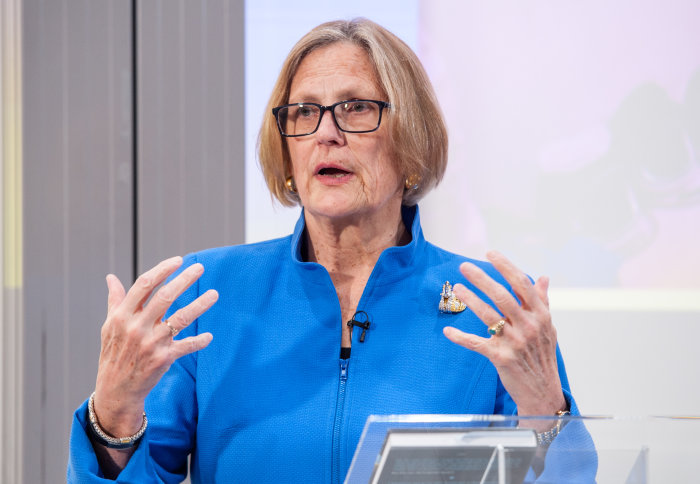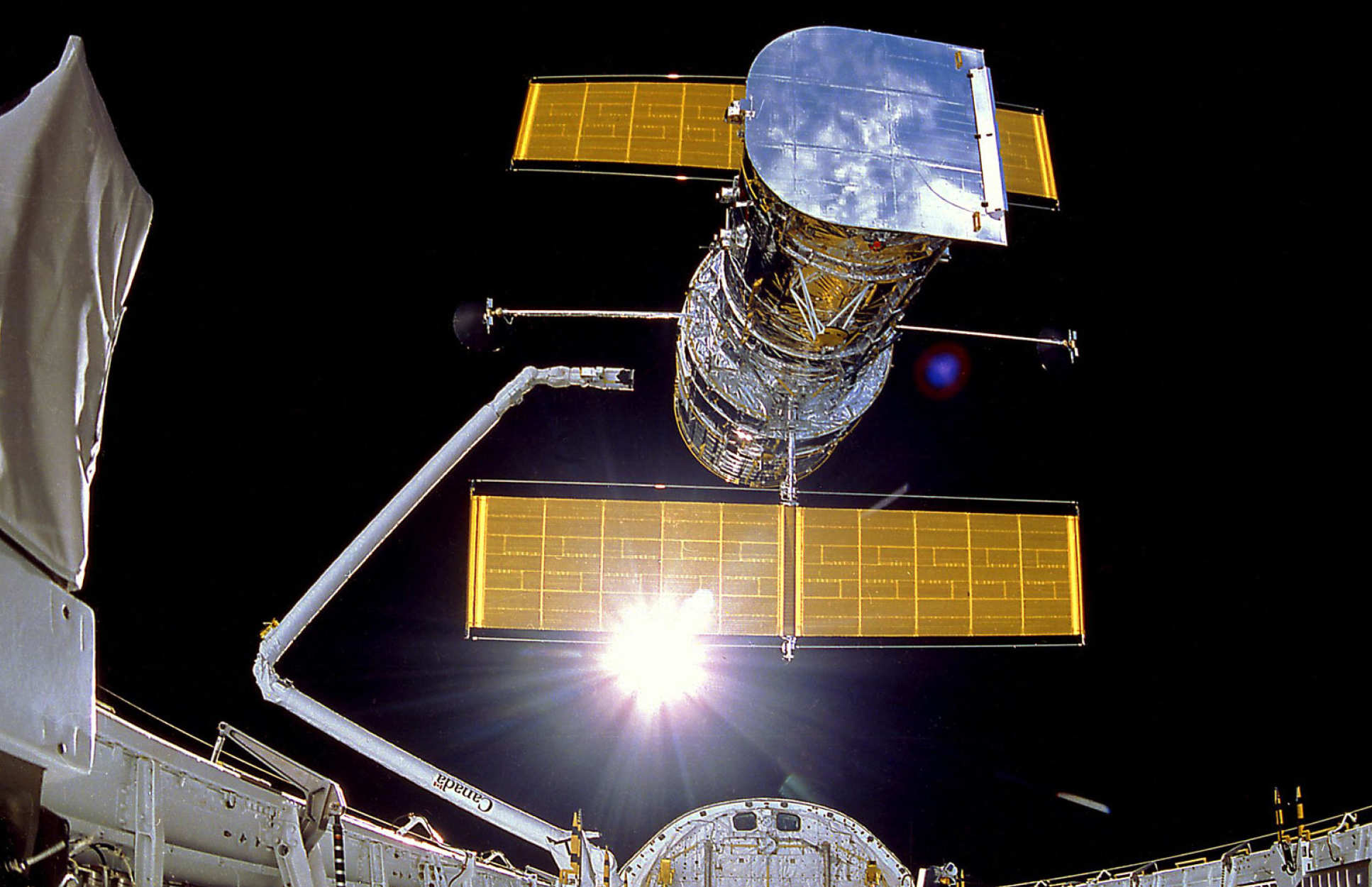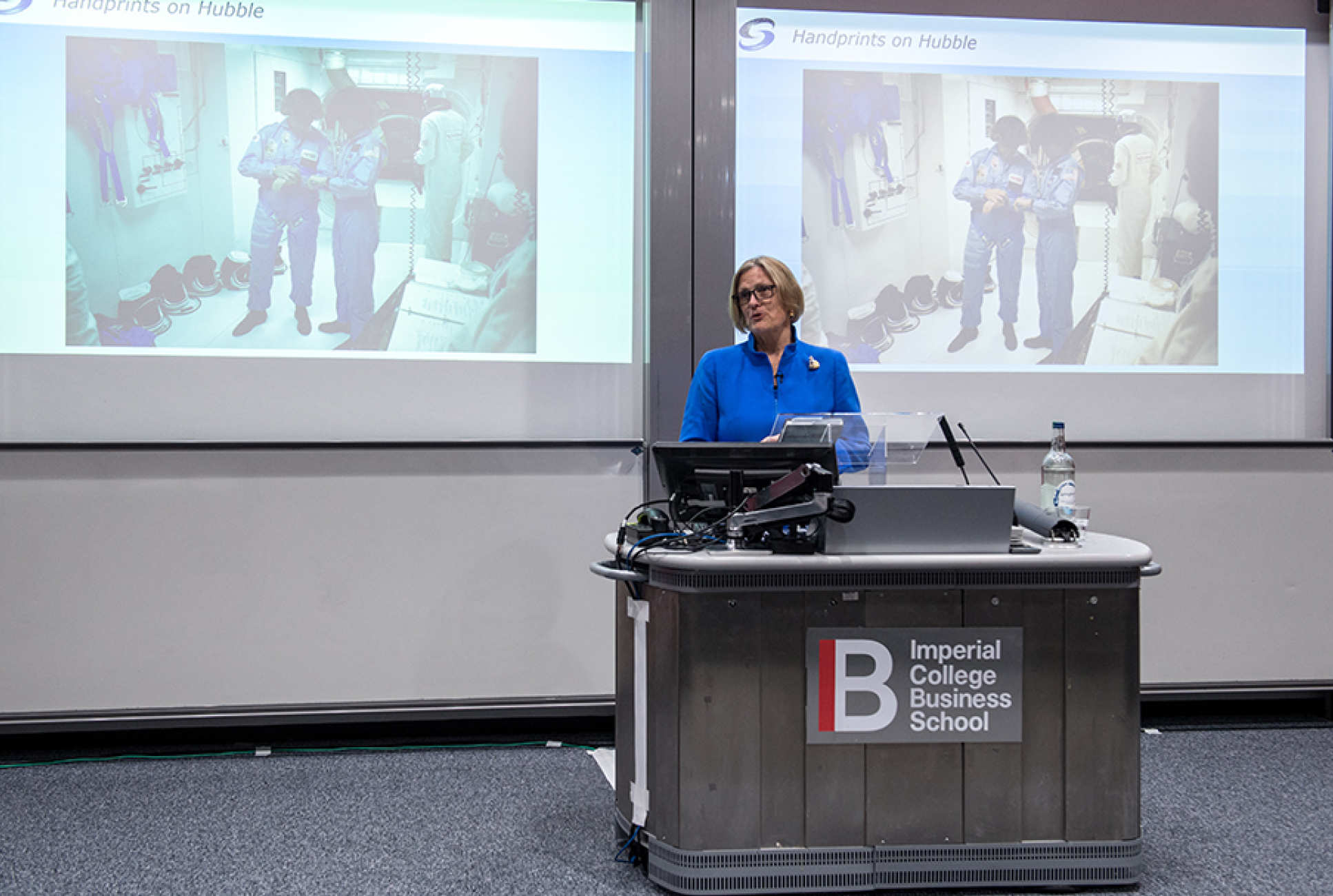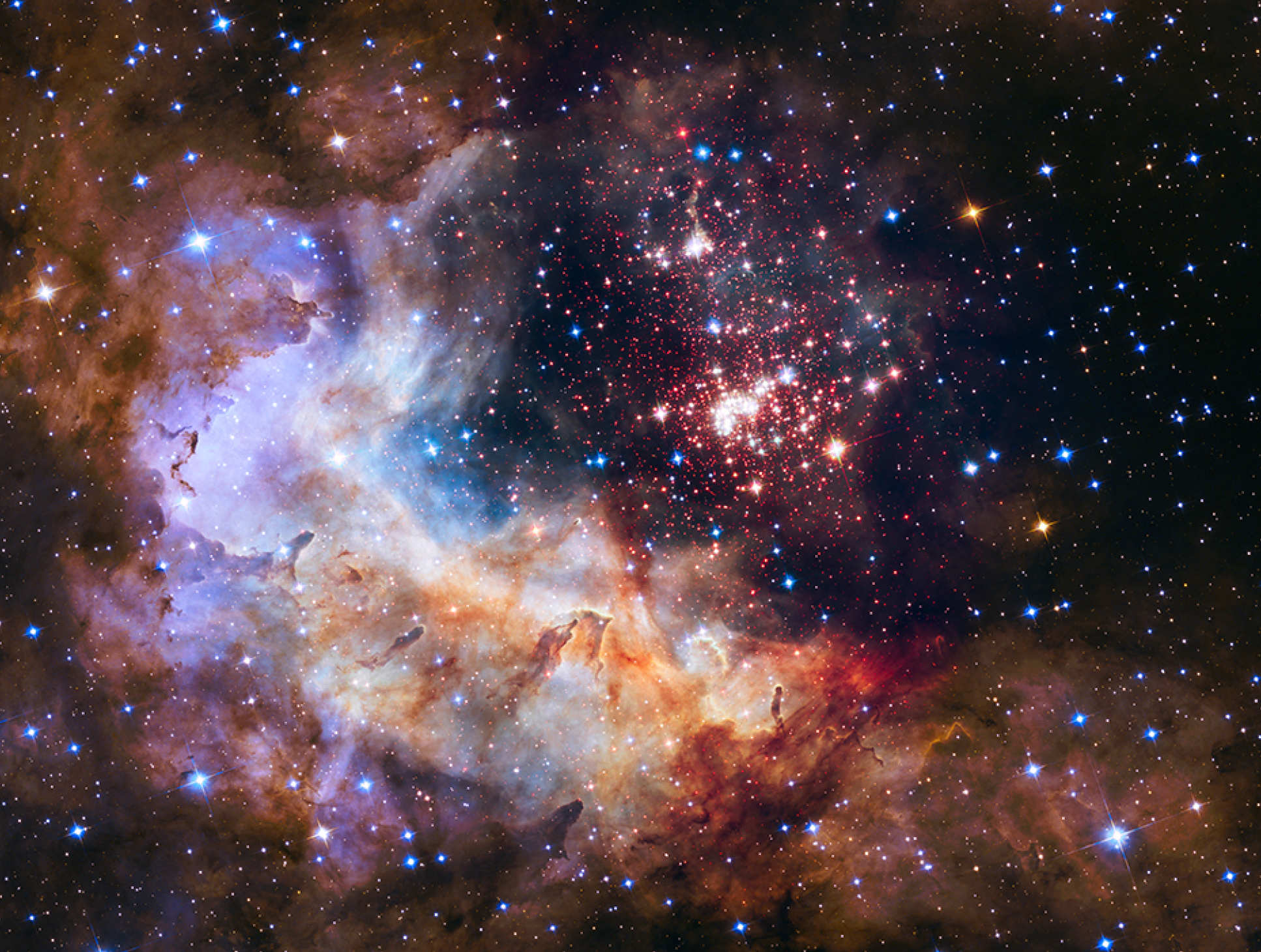
Kathryn D. Sullivan

Aerospace enthusiasts gathered last week to hear from Kathryn D. Sullivan following the publication of her new memoir.
Sullivan, a former NASA astronaut and the first American woman to walk in space, shared excerpts from Handprints on Hubble: An Astronaut's Story of Invention, which recounts her experiences working as part of the team that launched and repaired the Hubble Space Telescope.
Deployed on 25 April 1990, the Hubble Space Telescope has gone on to reveal thousands of new galaxies and transform our understanding of how planets form. Over 29 years since its launch, it continues to reveal new insights into our universe thanks to the pioneering contributions of Sullivan and her teammates.

Hubble’s "hidden figures"
In opening her talk, Sullivan explained the motivation behind writing Handprints on Hubble: “What I’ve tried to do in this book is to use the arc of my life and my career as a vehicle for telling stories which have been completely overlooked.”
“It’s about the hidden figures: people in behind-the-scenes, unsung roles whose work was absolutely indispensable to Hubble’s success. None of their names have been written down or mentioned in the great sweep of Hubble history.”
Sullivan went on to recall the challenges she and her fellow NASA teammates faced in the lead up to the Hubble mission. Originally scheduled for deployment in October 1986 from the space shuttle Challenger, the first major setback came when the craft exploded in January of the same year. When the project was eventually recommissioned, Sullivan worked to pioneer bespoke, state-of-the-art tools which would allow the telescope to be regularly serviced and upgraded while in orbit.
“It was on us to make sure no spacewalker ever went out to do a job on Hubble, only to discover that their tools didn’t fit or broke in the wrong place,” she explained.

After an extensive testing period, Sullivan and four fellow astronauts went on to successfully pilot the space shuttle Discovery and deploy the telescope in April 1990 as part of a five-day mission. However, she recalled the intense disappointment that followed when the first images returned by Hubble revealed a serious issue with its optical system. It was at this point that Sullivan's work to ensure the telescope’s maintenance capability paid off, and a team of engineers were able to calculate how to correct the problem with the addition of new mirrors.
“They told us: ‘The bad news is you screwed it up. The good news is you screwed it up very precisely’”.

Sullivan described her experience working as part of the Hubble mission as “the proudest in my space career.” Referring to an image of smeared handprints on Hubble’s exterior, she went on to explain how these could be seen as a metaphor for the hundreds of unsung heroes who contributed to its success: “These handprints are the tip of the iceberg.”
“They are there, they are impressive, but they barely hint at all that lies below and behind: [the people who] you can’t see and probably haven’t heard of, but are why the Hubble is such a spectacular looking glass, and why it has done so much to revolutionise how we understand the universe around us.”
“I have yet to run out of frontiers”
Following the talk, Sullivan took part in a Q&A session chaired by Professor Michele Dougherty, Head of Imperial’s Department of Physics, and was thanked by President Alice Gast for “bringing this story to life – [that of] the Hubble, and the great people and science behind it.”
Discussing her early life and career, Sullivan explained how a childhood fascination with maps and explorers fostered a desire for “a kind of lifestyle where you’re creating answers to interesting questions and exploring new places”, eventually leading her to study earth sciences and oceanography.
Commenting on her experiences of joining NASA and becoming one of the first American female astronauts, she recalled how being recruited as part of a diverse group of women meant that “no one individual became the archetype or was presumed to be representative of every other woman out there.”
“We, our classmates and the people who chose us knew that we got in on the same basis as everyone else – we knew we could hold our own. There was probably some scepticism in some corners but [I had an attitude of]: ‘Okay, be sceptical. Just watch’”.
When asked, as a former oceanographer and astronaut, whether there were any more frontiers left for her to traverse, Sullivan responded: “Life has many more frontiers that are always available for us to explore – cultural or intellectual or otherwise, and I have yet to run out of frontiers.”
Article text (excluding photos or graphics) © Imperial College London.
Photos and graphics subject to third party copyright used with permission or © Imperial College London.
Reporter

Ms Genevieve Timmins
Academic Services

Contact details
Email: g.timmins@imperial.ac.uk
Show all stories by this author




Leave a comment
Your comment may be published, displaying your name as you provide it, unless you request otherwise. Your contact details will never be published.